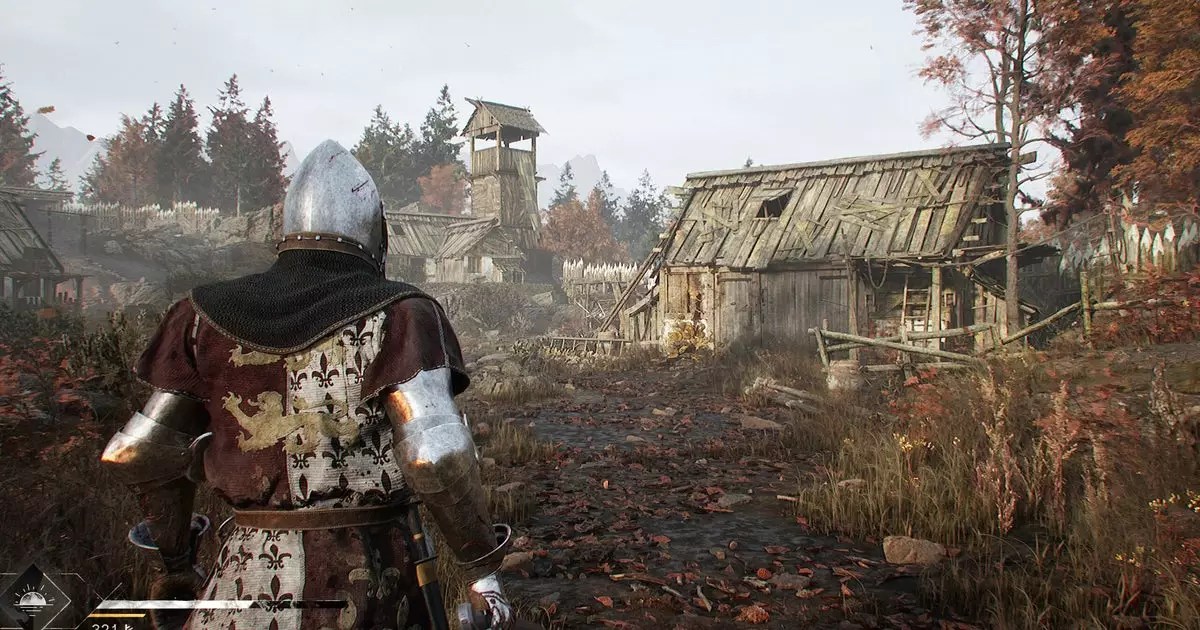The gaming landscape is awash with projects that ebb and flow in development, yet few evoke a sense of morbid curiosity quite like Haenir’s “Blight: Survival.” This upcoming action-horror game teeters between the line of grotesque fantasy and harrowing exploration, promising players a chance to traverse a sordid world choked by war and decay. The game’s premise, highlighting the eternal conflict between two kingdoms and the nightmarish consequences that ensue, serves as both a backdrop and a catalyst for the chaos players will encounter. But does this harrowing narrative hold up under scrutiny, or does it merely masquerade as deep storytelling in a sea of sludge?
Ambiguous Morality and Game Mechanics
In “Blight: Survival,” players assume the role of graverobbers, scavenging through the aftermath of a relentless war that has reduced the local populace to grotesque, undead beings. Herein lies a paradox: the line between hero and villain is dangerously blurred. As players delve into perilous quests across this putrid urban sprawl, one is compelled to question their moral compass. Is the objective merely survival, or is it an invitation to embrace the chaos? The game’s mechanics appear to mirror this thematic ambiguity; by integrating rogue-lite elements and extraction gameplay, it offers a high-stakes environment where decision-making could lead to a miserable defeat or a fleeting sense of triumph.
The notion of “directional combat” presents another layer of engagement. Though often poorly implemented in other titles, its usage here has sparked intrigue. Drawing comparisons to the acclaimed and immersive combat systems in “For Honor” and “Kingdom Come: Deliverance,” players will find themselves swinging swords with a degree of visceral satisfaction. The challenge lies in mastering this system to not only fend off reanimated foes but also to maintain a sense of agency in a world that relentlessly pushes against them. Yet, as experimental as these mechanics may be, the question remains—are they enough to uphold the game’s narrative integrity?
Technological Aspirations and Visual Aesthetics
The aesthetic ambiance of “Blight: Survival” drips with the essence of horror, tapping into the primal fear that arises from decay and desolation. The developers express an artistic commitment to crafting environments reminiscent of classic horror narratives, peppered with the unsettling elements of dark fantasy. The swampy terrains, dismal chapels, and even the cursed trees hold more than mere visual appeal; they offer players a space to lose themselves—both physically and psychologically. This undercurrent of dread and visual richness should engender a visceral reaction, aligning perfectly with the game’s grim themes.
It’s also noteworthy that Haenir has recently expanded its team significantly, welcoming several full-time developers from the reputable studio Behaviour Interactive. While this influx of talent bodes well for increased production quality, one must remain vigilant against the corporate pitfalls that can dilute creative authenticity. The influx of personnel should ideally fortify the project’s direction. However, concerns linger about whether this wholesale shift could lead to an over-polished product that loses its original edge, transforming raw ambition into a homogenized release.
Community and Anticipation
The response from potential players has shown tremendous interest, as evidenced by the limited closed playtesting that has garnered attention. True, anticipation can become a double-edged sword; while excitement for engaging gameplay can catalyze community building, it can also raise expectations to unattainable heights. The balance of delivering a genuinely engrossing experience against the backdrop of high-player anticipation is a delicate one. With its unique premise and aesthetic, “Blight: Survival” seeks to carve out a defined niche in the gaming market, challenging ideals of heroism while delving into the horror of human conflict.
As players prepare to embark on these treacherous journeys through the underbelly of this conflict-riddled realm, the question remains: will Haenir’s vision transcend traditional gaming tropes, or will it succumb to the pitfalls of its ambitious narrative? The answer will be penned anew with each exploration—and therein lies the allure.


Leave a Reply